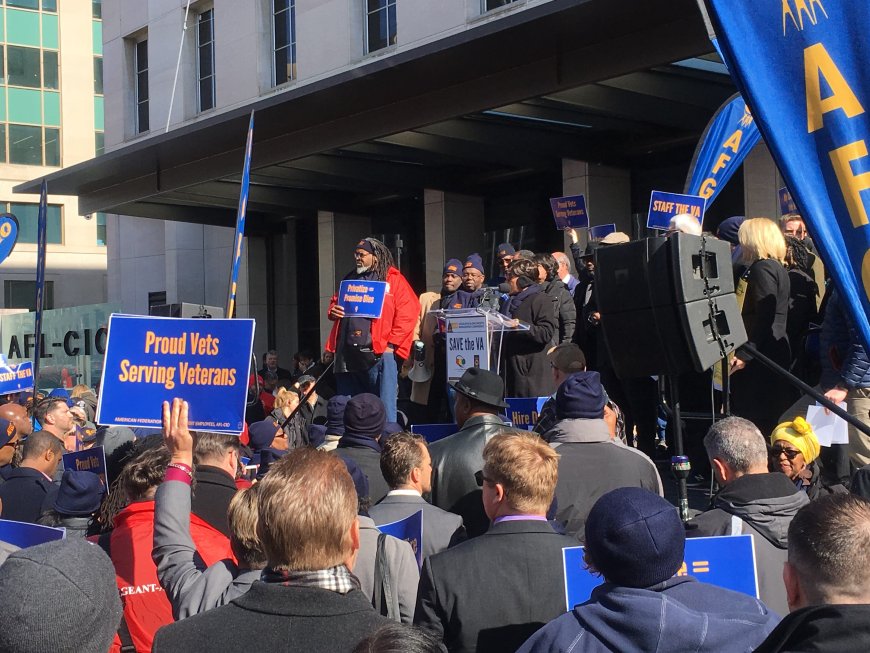Shock Move: VA Severs Ties with Federal Unions, Cancels Worker Contracts Nationwide
In a major shift, the Department of Veterans Affairs cut ties with several federal unions on August 5, 2025, cancelling multiple labor contracts. The move signals a new direction in government-union relations and has sparked widespread reaction.

In a dramatic shift that has sent shockwaves through Washington, the U.S. Department of Veterans Affairs (VA) announced on Monday, August 5, 2025, that it is severing ties with most federal unions, immediately terminating multiple long-standing worker contracts. The move affects tens of thousands of VA employees nationwide — from healthcare professionals to administrative staff — and has sparked fierce backlash from labor leaders and lawmakers alike.
The announcement represents one of the most consequential labor policy changes within a federal agency in years and raises pressing concerns about employee rights, veteran care, and union protections under the current administration.
What Happened: Contracts Terminated Without Warning
According to a formal statement from the U.S. Department of Veterans Affairs, the agency ended collective bargaining agreements with eight major unions, citing contract expirations and "irreconcilable negotiation failures."
Most notably impacted is the American Federation of Government Employees (AFGE), which represents approximately 270,000 VA workers. These contracts had governed critical aspects of worker protections, grievance procedures, and disciplinary actions for years.
“This is an unprecedented attack on federal workers who serve our veterans with dignity every day,” said Everett Kelley, National President of the AFGE. In a strongly worded statement, he called the VA’s decision “authoritarian and destructive.”
Union officials claim they received notice mere hours before the announcement was made public. Many of them say this was a "coordinated ambush" timed to minimize legal resistance and maximize administrative control.
Why the VA Took This Step
VA Secretary Troy Nehls, appointed earlier this year, defended the move in a press briefing on Tuesday, arguing that current contracts were “bloated with bureaucratic red tape” and “inefficient in meeting the demands of a modern healthcare system.”
“This isn’t about anti-union sentiment,” Nehls insisted. “This is about prioritizing veterans. We need a workforce that is agile, accountable, and committed to excellence. The old system made it nearly impossible to reward merit or discipline misconduct.”
While the VA claims these changes will streamline operations and improve patient care, critics say they strip federal workers of their voice and due process. Labor advocates argue the move is part of a broader campaign to erode federal union power under President Donald Trump’s administration.
Worker Reactions: Protests, Legal Threats, and Public Outrage
Union members across the country staged protests on Tuesday, August 6, outside major VA facilities in Atlanta, Cleveland, and Seattle. Many employees held signs reading “Veterans Deserve Better — So Do We” and “Contracts Protect Care.”
The AFGE, along with several smaller unions, has pledged to launch immediate legal action, citing violations of the Federal Service Labor-Management Relations Statute. Union attorneys are preparing filings to the Federal Labor Relations Authority (FLRA) and have also hinted at potential class action lawsuits.
“We will not be silenced,” said Jacqueline Simon, AFGE’s policy director. “Federal law guarantees the right to collective bargaining, and this administration cannot dismantle decades of labor progress with a memo.”
Broader Implications: A Test Case for Federal Labor Law
This confrontation between the VA and its unions may serve as a precedent for other federal agencies. Experts suggest it could embolden more departments to challenge or exit longstanding labor contracts in pursuit of unilateral control.
“This is the most significant rollback of federal union influence since the Reagan era,” said Dr. Alice McKinley, labor historian at Georgetown University. “It sets the stage for a legal and political showdown with far-reaching implications.”
According to a Congressional Research Service report, while agencies have legal authority to manage personnel, they are obligated to negotiate in good faith — a condition labor leaders argue has been blatantly ignored.
Political Fallout: Heated Bipartisan Reactions
Reactions on Capitol Hill have been swift and polarized. Senator Bernie Sanders (I-VT) condemned the decision, calling it “a disgraceful betrayal of the very people who make veteran care possible.”
Meanwhile, Rep. Mike Gallagher (R-WI) defended the VA’s actions, stating, “We’ve tolerated inefficiency and abuse for too long. Reforming the federal workforce is essential to restoring public trust.”
Several House and Senate committees have already requested emergency hearings to examine the legality of the terminations and their potential impact on VA operations.
What Happens Next?
For the immediate future, the VA will operate under internal administrative guidelines and newly drafted performance management protocols. These will replace the union-negotiated procedures, including dispute resolution mechanisms and personnel reviews.
Unions are mobilizing for a massive demonstration in Washington, D.C., on August 12, aiming to bring national attention to the fight for federal workers’ rights.
The stakes are high: if the VA’s move stands unchallenged, it could shift the balance of labor relations across the entire federal workforce.
Conclusion: A Watershed Moment in Public Sector Labor History
The VA’s abrupt decision to terminate its union contracts marks a defining moment in the modern history of public sector employment. Whether viewed as a bold reform or a reckless power grab, one thing is clear: this isn’t just about veterans or unions — it’s about the future of how government works.
As legal challenges, protests, and Congressional investigations unfold, the nation will be watching closely. The question remains: will this lead to a leaner, more efficient VA — or will it unravel a decades-old framework of labor rights built to protect both employees and the veterans they serve?









